Case #24: U.S. Proxy War Against the Soviet Union in Afghanistan, 1979-1988
| Revolution Newspaper | revcom.us
Bob Avakian has written that one of three things that has “to happen in order for there to be real and lasting change for the better: People have to fully confront the actual history of this country and its role in the world up to today, and the terrible consequences of this.” (See “3 Things that have to happen in order for there to be real and lasting change for the better.”)
In that light, and in that spirit, “American Crime” is a regular feature of revcom.us. Each installment focuses on one of the 100 worst crimes committed by the U.S. rulers—out of countless bloody crimes they have carried out against people around the world, from the founding of the U.S. to the present day.
See all the articles in this series.
THE CRIME
In July 1979, the U.S. began a covert campaign to destabilize Afghanistan’s new pro-Soviet government and lure the Soviet Union, at the time their main imperialist rival, into invading Afghanistan. In December 1979, after the Soviets invaded with 100,000 troops, the U.S. organized and led a bloody, decade-long proxy war against them and their Afghan client regime with one focus: bleeding the Soviet Union white and “killing Russians.”1
The U.S. and its allies Saudi Arabia and Pakistan organized, trained, and funded reactionary Islamic fundamentalist mujahideen (Islamist fighters) to carry out the war. After Ronald Reagan took power in 1981, the U.S. launched a global campaign to recruit the most radically anti-communist Islamists—“ideologically charged with the spark of holy war” as author Mahmood Mamdani reports—not only from within Afghanistan, but from all over the world. Jihadist clerics, such as the very prominent Sheikh Abdullah Azzam, under the CIA’s patronage were sent around the globe preaching that it was a religious duty for Muslims to fight in Afghanistan and actively recruiting fighters. The U.S. and its allies also spread fundamentalist ideology through a growing worldwide network of Islamic schools—madrassas.
Fighters were sent to Pakistan, where its intelligence service, the ISI, set up camps and conducted training in “guerrilla tactics, sabotage and bombings—i.e., terrorism—and coordinated military operations in Afghanistan.”2 The U.S. supervised the operation overall and provided intelligence, weapons and, along with Saudi Arabia, funding. In 1985, Reagan signed National Security Decision Directive 166, stepping up covert military aid to the mujahideen and escalating the U.S. goal from weakening the Soviet forces to defeating them and driving them out.3
The U.S. and its allies funneled more than $3 billion in arms and aid to the mujahideen—by 1987, some 65,000 tons of U.S.-made weapons and ammunition were flowing to the battlefront.
The chief of the Afghan branch of the ISI estimated that in his four years, some 80,000 mujahideen were trained in camps along the Afghanistan-Pakistan border. Author Ahmad Rashid writes that some 35,000 Muslim fundamentalist jihadists from 43 different countries fought with the Afghan mujahideen between 1982 and 1992.4
Among the recipients of U.S. aid in Afghanistan was the then little-known Saudi jihadist Osama bin Laden, who initially funneled money from Saudi Arabia to fighters in Afghanistan. He also set up his own military camp near the border for some 9,000 followers of Wahhabism, the harsh, fundamentalist brand of Islam promoted by the Saudi monarchy. It was in these camps and through the U.S.-backed proxy war that Al Qaeda, the Taliban, and other reactionary jihadist forces were forged.
At the time, the overwhelming majority of Afghanistan’s 18 million people lived as impoverished farmers in the extremely backward countryside, which was divided between different nationalities and ethnic groups including the Pashtun, Tajik, Hazara, Uzbek, Turkmen, and Baloch peoples—and overall dominated by large landowners, warlords, and the heads of feudal clans.
These mujahideen stood for this brutally oppressive traditional society, including the protection of big estates and the patriarchal oppression of women, and they were bitterly opposed to the limited secular reforms the Soviet-backed government was making, such as some land reforms, outlawing child marriage, teaching women to read, and other improvements in women’s status.5 Some of these mujahideen were notorious for burning down schools and slitting the throats of schoolteachers for teaching boys and girls together in mixed classes, or punishing or killing Afghan refugees who questioned their fundamentalist dogmas and reactionary social norms.
By 1989, after a decade of bloody guerrilla war, the Soviets were forced to pull out in defeat, but not before its invasion and the U.S. armed proxy war had torn Afghanistan apart.
Between 800,000 and 1.5 million Afghans (along with 15,000 Soviet soldiers) were killed in this reactionary bloodbath, and nearly half the population was uprooted by the war—five million Afghans were forced from the country as refugees,6 and another two million were displaced within Afghanistan.7 And decades of horrors have ensued from the U.S. role in helping unleash and spread the scourge of reactionary Islamic fundamentalism and jihadism across the region and the world.
THE CRIMINALS
President Jimmy Carter and his National Security Advisor Zbigniew Brzezinski backed anti-regime forces in Afghanistan in order, as Brzezinski put it, “to induce a Soviet military intervention.” Carter and his team then turned the invasion into a global focal point of America’s stepped-up imperialist rivalry with the Soviet Union, including by cutting off grain sales to the Soviet Union and boycotting the 1980 Olympics, which were held in Moscow.
President Ronald Reagan, the Reagan administration launched the bloody U.S. proxy war against the Soviets in Afghanistan and played a major role in congealing and spreading reactionary Islamic jihadism. This was part of the U.S. global “full-court press” aimed at rolling back Soviet imperialism around the world, a clash which at times brought the world to the brink of nuclear war.
The CIA led the overall global campaign to organize, fund, and wage a reactionary Islamic fundamentalist “holy war” against Soviet troops in Afghanistan.8
Saudi Arabia. “The Saudi, their intelligence service primarily provided cash,” according to author Steve Coll. “Each year the congress would secretly allocate a certain amount of money to support the CIA’s program. After that allocation was complete, the US Intelligence liaison would fly to Riyadh and the Saudis would write a matching check.”9
Pakistan: Its army set up camps on the Afghan border, trained fighters, and, in collaboration with the U.S., helped direct the war on the front lines.10
The Islamic Mujahideen. During the war these Islamic fundamentalist fighters were notorious for barbaric torture and mutilation of their opponents. After waging a reactionary war against the Soviet occupiers, different Islamic fundamentalist factions fought for power after the Soviet forces left Afghanistan. In 1996, with Pakistan’s backing, the Taliban emerged and took control. Far from representing the “highest aspirations of freedom,” the Islamic fundamentalist Taliban enforced feudal economic relations that kept Afghan peasants shackled and destitute and made life hell for the people, especially for women. Reactionary religious strictures and suffocating social relations were imposed on pain of amputation or death—a savagery scorched into the world’s memory by the stadium stonings of women for “crimes” like adultery.
“The rise of the Taliban was accompanied by savage attacks on women. Women are forced to wear dark veils covering them from head to toe; they are forbidden to work or go to school; they cannot walk in the streets, shop or seek care in hospitals unless accompanied by a mahram male (husband, brother or father), and even public baths are barred to them. Women are bought and sold, taken as war spoils, raped and killed,” M.N. Cham wrote.11
THE ALIBI—IN THEIR OWN WORDS
“It is a deliberate effort by a powerful atheistic government to subjugate an independent Islamic people.”
—Jimmy Carter denouncing the 1979 Soviet invasion
“This resolution testifies to America’s deep and continuing admiration for the Afghan people in the face of brutal and unprovoked aggression by the Soviet Union.... Nowhere are basic human rights more brutally violated than in Afghanistan today.... We cannot and will not turn our backs on this struggle.... [T]he struggle of the Afghan people represent man’s highest aspirations for freedom.”
—Ronald Reagan on signing a proclamation for “Afghanistan Day,” 198212
THE REAL MOTIVE
America’s proxy war in Afghanistan took place against the backdrop of the U.S.’s sharply escalating global contention with the Soviet Union, which was by then its main rival imperialist power.
The day the Soviets marched into Afghanistan—to project their power, counter U.S. moves, and stabilize their client regime—Brzezinski wrote Carter: “We now have the opportunity of giving to the USSR its Vietnam War.”13
In other words, the U.S.’s main goal was to inflict a Vietnam-style military and strategic defeat on the Soviet Union, and that called for bogging them down in a protracted bloody war. The Soviet Union’s defeat in Afghanistan turned out to be one of the triggers of its 1989-91 collapse and the victory of the U.S. imperialists in the Cold War. (A secondary objective of the Afghan proxy war was undercutting the newly founded Islamic Republic of Iran by organizing pro-U.S. Sunni Islamist forces.)
After the Taliban took power, the U.S. considered it a potential partner. While the Taliban’s agenda conflicted sharply with the U.S.’s at times, the Taliban weren’t fundamentally opposed to imperialism’s overall domination of Afghanistan. In fact, they were quite willing to deal with the U.S. over oil pipelines and on other fronts. And both the U.S. and the Islamic fundamentalists shared a hatred of and fundamental opposition to Maoist forces in Afghanistan.
While the U.S. didn’t have formal diplomatic relations with the Taliban and clashed with them over Al Qaeda's presence in Afghanistan, it welcomed their seizure of power in 1996 in hopes they could bring stability to the region.14 As late as May 17, 2001, U.S. Secretary of State Colin Powell announced a $43 million aid package which “in addition to other recent aid, makes the U.S. the main sponsor of the Taliban.”15
1. “The single objective was to bleed the Soviet Union white. The CIA was determined that nothing come in the way of the ‘real task’ in Afghanistan: ‘killing Russians.’” Mahmood Mamdani, Good Muslim, Bad Muslim–America, the Cold War, and the Roots of Terror (Pantheon 2004), Chapter 3–“Afghanistan: The High Point in the Cold War,” pp. 119-142, p. 124. [back]
2. Mamdani, p. 126. [back]
3. The U.S. also considered unleashing the mujahideen in the Soviet Republics of Uzbekistan and Tajikistan, but that was abandoned after the Soviet Union threatened to attack Pakistan if that step was taken. Mamdani, p. 129. [back]
4. Ahmed Rashid, Taliban: Militant Islam, Oil and Fundamentalism in Central Asia; Some estimate that in total, there were some 250,000 battle-hardened Islamic fundamentalist fighters by the time the Afghan war ended. [back]
5. William Blum, Killing Hope–U.S. Military and CIA Interventions Since World War II (Common Courage 1995), pp. 340-41. [back]
6. Larry Everest, Oil, Power & Empire, (Common Courage, 2004) p. 90; The Soviet Invasion of Afghanistan, 1979-1989, ThoughtCo.com. [back]
7. “1985 ... Half of Afghan population now estimated to be displaced by war, with many fleeing to neighbouring Iran or Pakistan”. BBC, “Afghanistan profile - Timeline,” January 31, 2018. [back]
8. Mamdani. [back]
9. Steve Coll, author of Ghost Wars: The Secret History of the CIA, Afghanistan, and Bin Laden, from the Soviet Invasion to September 10, 2001 and Directorate S: The C.I.A. and America’s Secret Wars in Afghanistan and Pakistan, interviewed on Democracy Now!, June 10, 2004 and February 8, 2018. [back]
10. Steve Coll. [back]
11. M.N. Cham, “Cutting Through the Darkness in Afghanistan,” A World To Win, #24, 1998. [back]
12. President Ronald Reagan “Proclamation 5309—Afghanistan Day, 1985,” March 21, 1985. [back]
13. David Gibbs, “Brzezinski Interview,” 1998. [back]
14. Kathmandu Post (September 20) said, “When the Taliban ... entered Kabul on 27 September 1996, the US state welcomed the development with the hope that the new rulers might bring stability to the region despite the fact that they are notoriously illiberal in social terms.” In 1998, Bill Clinton launched cruise missile strikes against Al Qaeda camps in Afghanistan in retaliation for the August 7 bombings of U.S. embassies in Kenya and Tanzania, but the U.S. strikes did not target the Taliban regime. [back]
15. “The U.S., the CIA, and Osama bin Laden," revcom.us, April 4, 2004. [back]
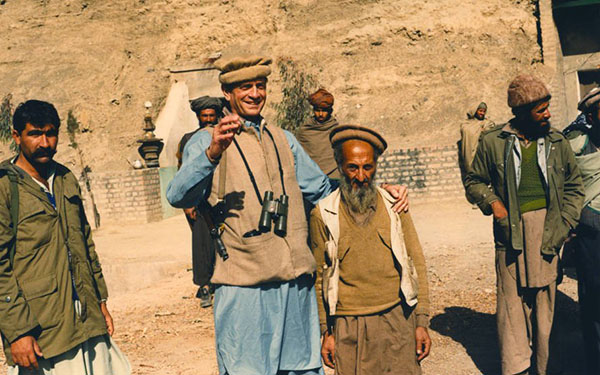 U.S. Congressman Charlie Wilson with reactionary Islamic mujahideen fighters. During the Reagan years, Wilson played a key role arranging U.S. arming and funding of the Afghan mujahideen, including with Stinger anti-tank and anti-aircraft missiles. (Photo: Public Domain)
U.S. Congressman Charlie Wilson with reactionary Islamic mujahideen fighters. During the Reagan years, Wilson played a key role arranging U.S. arming and funding of the Afghan mujahideen, including with Stinger anti-tank and anti-aircraft missiles. (Photo: Public Domain)
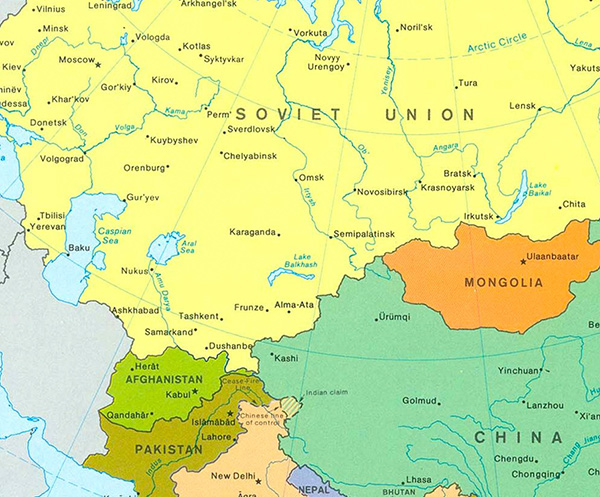
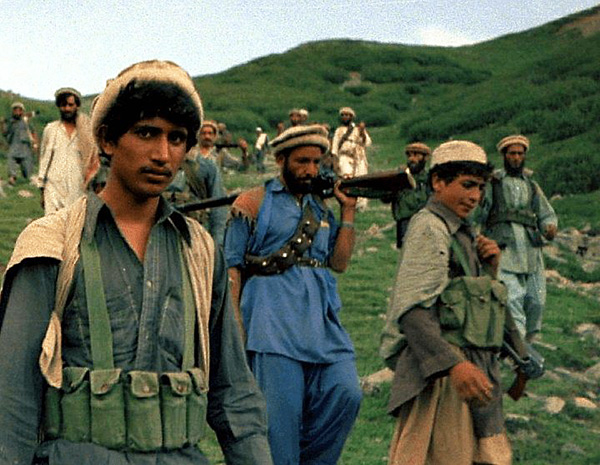 Mujahideen fighters, 1981. (Photo: Public Domain)
Mujahideen fighters, 1981. (Photo: Public Domain)
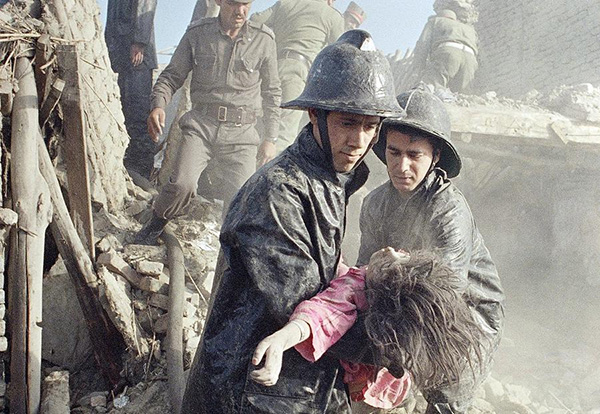 In U.S.-backed and funded camps in Pakistan, mujahideen fighters were trained in guerilla tactics, sabotage, and bombings. A young girl killed in a bombing by U.S.-backed anti-Soviet forces. (Photo: AP)
In U.S.-backed and funded camps in Pakistan, mujahideen fighters were trained in guerilla tactics, sabotage, and bombings. A young girl killed in a bombing by U.S.-backed anti-Soviet forces. (Photo: AP)
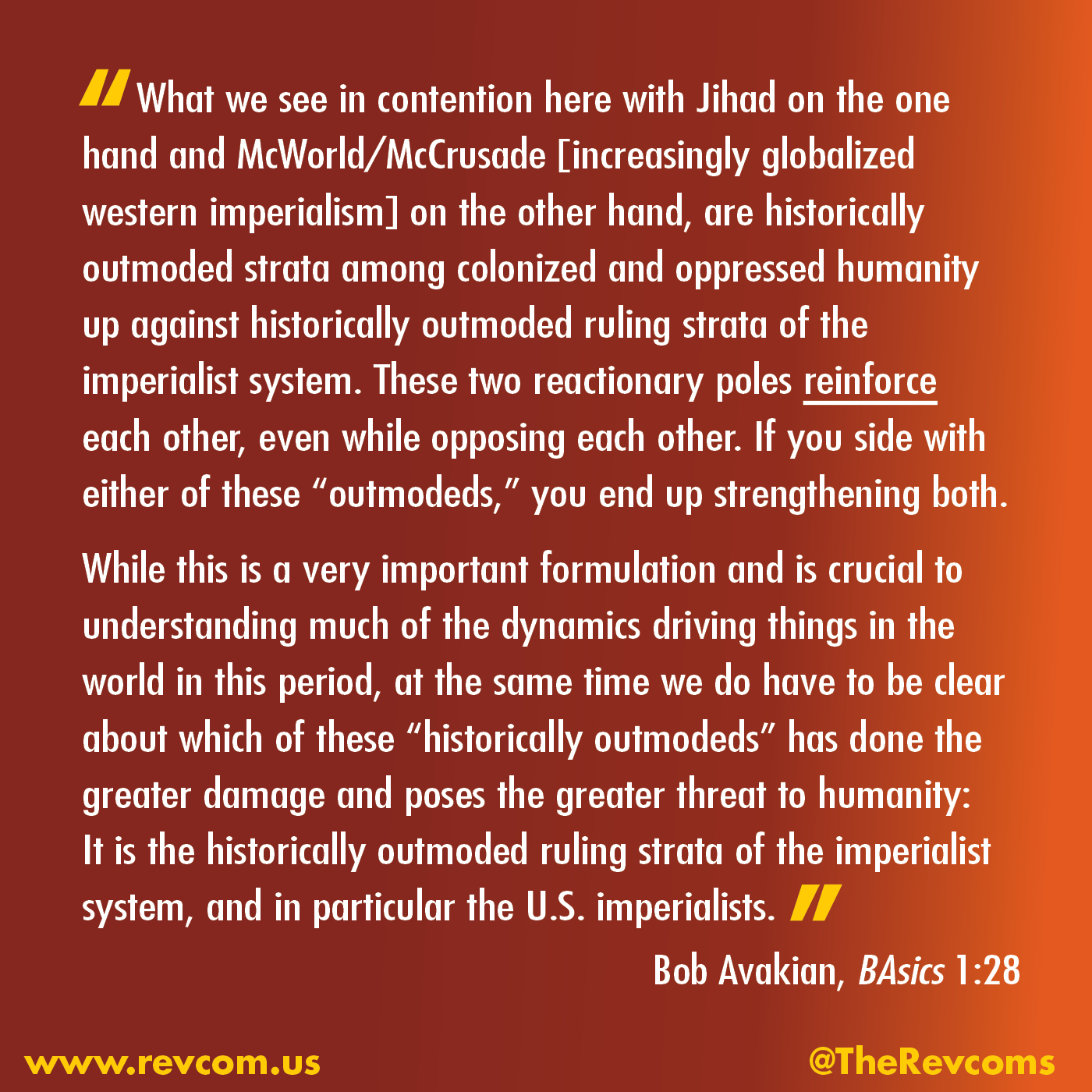
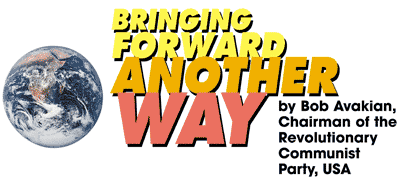
Bringing Forward Another Way is an edited version of a talk by Bob Avakian, Chairman of the Revolutionary Communist Party, USA, to a group of Party supporters in 2006. It is must reading for a serious understanding of what the U.S. "war on terror" is really about and how to bring forward a positive force in the world in opposition to both Western imperialism and Islamic Jihad.
Get a free email subscription to revcom.us:


